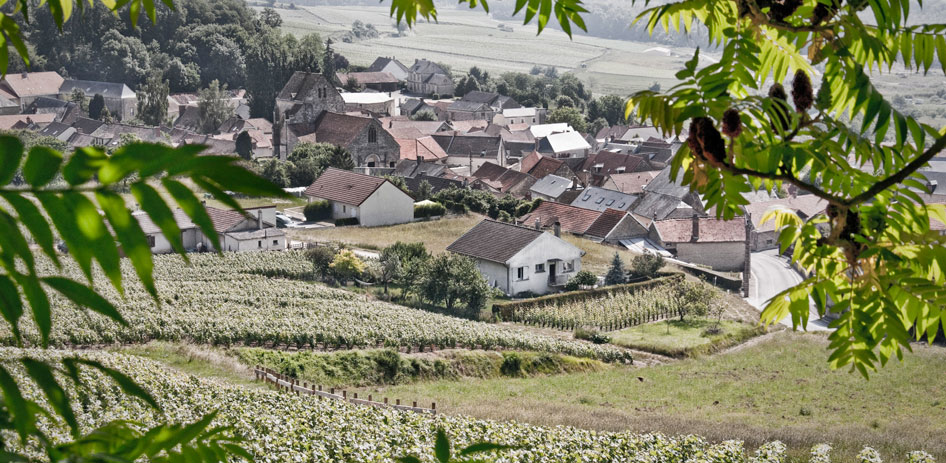 WINTER – Pruning
Pruning, the most important time in the winemaking year, takes place during the dormant winter period (November to March) and allows us to prepare for the coming harvest. Old vines are cut down and the new canes carefully positioned. Pruning is meticulous and subject to very strict regulations.
WINTER – Pruning
Pruning, the most important time in the winemaking year, takes place during the dormant winter period (November to March) and allows us to prepare for the coming harvest. Old vines are cut down and the new canes carefully positioned. Pruning is meticulous and subject to very strict regulations.
 WINTER – Binding
Once pruning is finished, the vine shoots are fastened to a 60cm-high support wire to train their growth and allow the buds to spread along them. An efficient way of controlling the quantity of grapes, this also promotes the growth of the vine.
WINTER – Binding
Once pruning is finished, the vine shoots are fastened to a 60cm-high support wire to train their growth and allow the buds to spread along them. An efficient way of controlling the quantity of grapes, this also promotes the growth of the vine.
 SPRING – Budburst
When spring arrives, the vines come back to life, the sap starts flowing again and then the buds burst. Nonessential shoots are pruned to optimize the vine's access to air and sunlight in order to maintain subsequent root systems.
SPRING – Budburst
When spring arrives, the vines come back to life, the sap starts flowing again and then the buds burst. Nonessential shoots are pruned to optimize the vine's access to air and sunlight in order to maintain subsequent root systems.
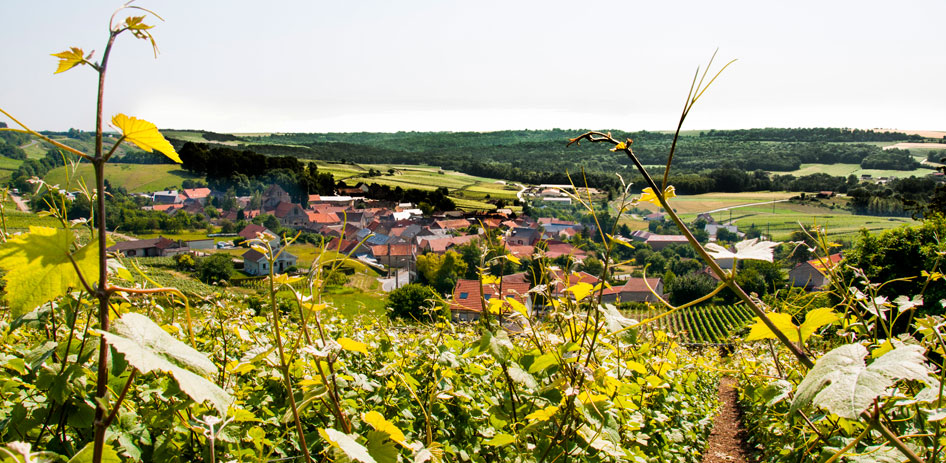 SUMMER – Trellising
Once the vine-shoots have grown, they must be carefully managed, as ventilation is vital for successful vine growth. This involves trimming and thinning the leaf canopy to give the grapes as much exposure to light and sun as possible. The vine is regularly pruned throughout the summer months to control its height.
SUMMER – Trellising
Once the vine-shoots have grown, they must be carefully managed, as ventilation is vital for successful vine growth. This involves trimming and thinning the leaf canopy to give the grapes as much exposure to light and sun as possible. The vine is regularly pruned throughout the summer months to control its height.
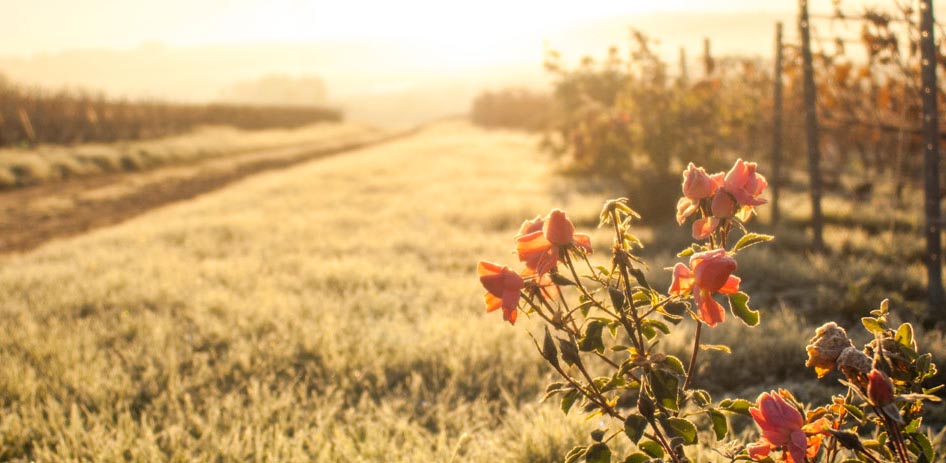 SUMMER – Sustainable Winegrowing
The quality of our grapes and our soil are essential to our vineyard so, several years ago, we took the decision to adopt sustainable practices in our winegrowing.
SUMMER – Sustainable Winegrowing
The quality of our grapes and our soil are essential to our vineyard so, several years ago, we took the decision to adopt sustainable practices in our winegrowing. Winegrowing is dependent on nature and climate. Too much heat or too much rainfall can cause disease so it is vital to ensure that the vines remain healthy. We now rely on sustainable management methods which consist in using the right amount of a product, at the right time. This is made possible thanks to a combination of our ongoing vigilance in the vineyard and our team of technicians who constantly conduct tests on sample plots to evaluate new agricultural techniques.
For example, we stopped using insecticides several years ago in favour of a more eco-friendly technique. And, we have opted for grass cover-cropping in most of our plots to reduce the use of weed killer, control the yields of our vines and prevent soil erosion. The headlands and slopes surrounding the vines are also grass covered to limit surface water runoff, erosion and pollution.
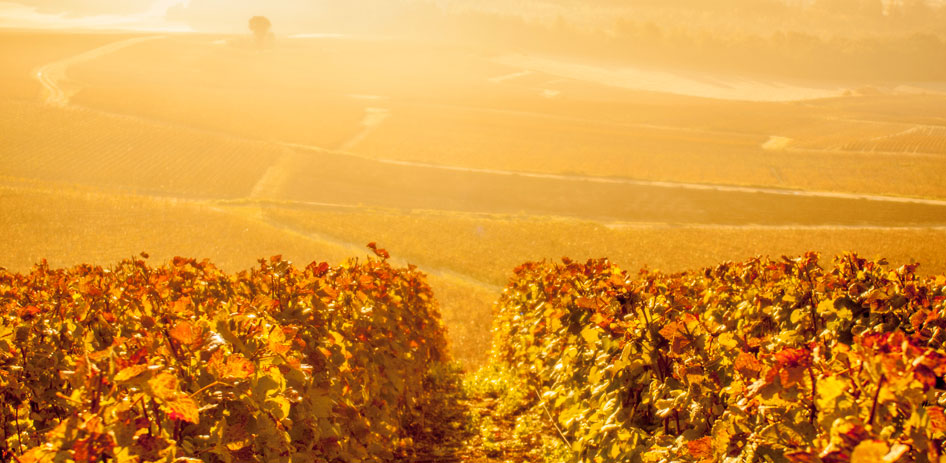 FALL– Harvest
In August, we monitor the maturity of each of the plots to set the date for harvesting. Our grapes are hand-picked according to Champagne tradition and then delivered to Coopérative La Vigneronne where the different grape varieties are pressed and vinified separately.
FALL– Harvest
In August, we monitor the maturity of each of the plots to set the date for harvesting. Our grapes are hand-picked according to Champagne tradition and then delivered to Coopérative La Vigneronne where the different grape varieties are pressed and vinified separately.
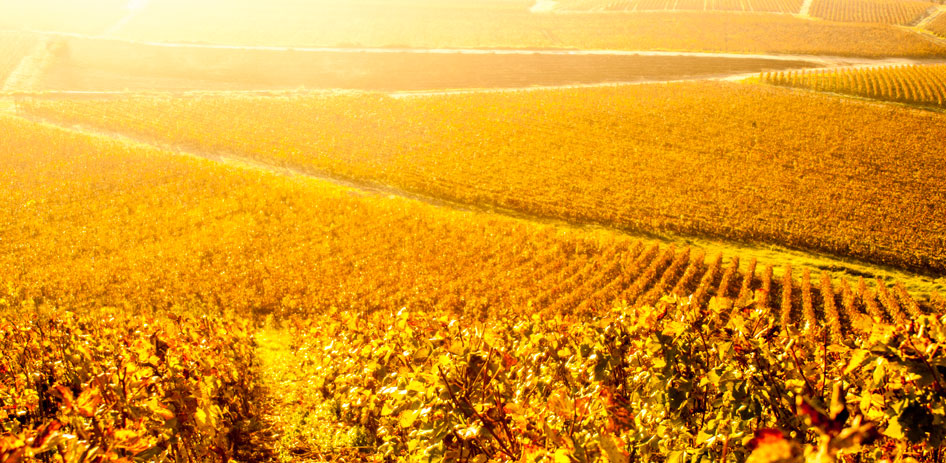 FALL – Fermentation
Once the grapes are pressed to extract the juice, the fermentation process begins. This is when yeast converts sugar into alcohol and the wine becomes Champagne. Then comes the secondary (malolactic) fermentation and aging process. During this stage, the malic acid converts into softer lactic acid which adjusts the acidity of the wines and creates the brioche aroma and a round taste.
FALL – Fermentation
Once the grapes are pressed to extract the juice, the fermentation process begins. This is when yeast converts sugar into alcohol and the wine becomes Champagne. Then comes the secondary (malolactic) fermentation and aging process. During this stage, the malic acid converts into softer lactic acid which adjusts the acidity of the wines and creates the brioche aroma and a round taste.
 Blending
Once the wines are elaborated and stabilised, it is time to taste them and then blend them. Blending our three different varieties of grape is a subtle art and creates the distinctive signature of our Champagne house. Our Tradition, Rosée, and Grande Réserve cuvées are the result of this blending.
Blending
Once the wines are elaborated and stabilised, it is time to taste them and then blend them. Blending our three different varieties of grape is a subtle art and creates the distinctive signature of our Champagne house. Our Tradition, Rosée, and Grande Réserve cuvées are the result of this blending.
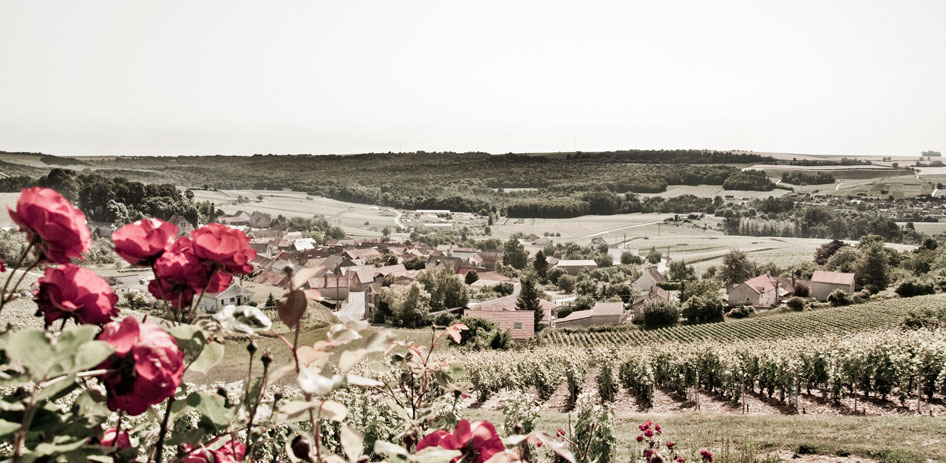 SPRING - Bottling
April is the month when we bottle our wines and the effervescence produced. Then begins the ageing process that lasts from three to five years and during which the wine develops its "tertiary" or "ageing" aromas.
SPRING - Bottling
April is the month when we bottle our wines and the effervescence produced. Then begins the ageing process that lasts from three to five years and during which the wine develops its "tertiary" or "ageing" aromas.
 Disgorging
After the ageing process, the length of which is determined by the cuvée, the bottles are turned upside down so that the sediment collects in the neck of the bottle and then the caps removed to evacuate the sediment.The amount of sugar in the liqueur d'expédition which is then added determines whether the Champagne is Brut or Demi-Sec. And at last, it's time to label, dispatch and, of course, sit back and enjoy a glass of bubbly with family and friends!
Disgorging
After the ageing process, the length of which is determined by the cuvée, the bottles are turned upside down so that the sediment collects in the neck of the bottle and then the caps removed to evacuate the sediment.The amount of sugar in the liqueur d'expédition which is then added determines whether the Champagne is Brut or Demi-Sec. And at last, it's time to label, dispatch and, of course, sit back and enjoy a glass of bubbly with family and friends!
We give a special care to our vines all along the year, but also to our environment in order to preserve our terroir. This is because the wine-making process first comes from work and respect of the vine.